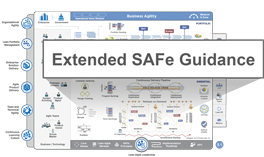If we knew what we were doing, it wouldn’t be called research.
—Albert Einstein
Spikes
[scd_58689 title=”extended-guidance”]Spikes are a type of exploration Enabler Story in SAFe. Defined initially in Extreme Programming (XP), they represent activities such as research, design, investigation, exploration, and prototyping. Their purpose is to gain the knowledge necessary to reduce the risk of a technical approach, better understand a requirement, or increase the reliability of a story estimate.
Like other stories, spikes are estimated and then demonstrated at the end of the Iteration. They also provide an agreed upon protocol and workflow that Agile Release Trains (ARTs) use to help determine the viability of Epics.
Details
Agile and Lean value facts over speculation. When faced with a question, risk, or uncertainty, Agile Teams conduct small experiments before moving to implementation, rather than speculate about the outcome or jump to a Solution. Teams may use spikes in a variety of situations:
- Estimate new Features and Capabilities to analyze the implied behavior, providing insight about the approach for splitting them into smaller, quantifiable pieces
- Perform feasibility analysis and other activities that help determine the viability of epics
- Conduct basic research to familiarize them with a new technology or domain
- Gain confidence in a technical or functional approach, reducing risk and uncertainty
Spikes involve creating a small program, research activity, or test that demonstrates some aspect of new functionality.
Technical and Functional Spikes
Spikes primarily come in two forms: technical and functional.
Functional spikes – They are used to analyze overall solution behavior and determine:
- How to break it down
- How to organize the work
- Where risk and complexity exist
- How to use insights to influence implementation decisions
Technical spikes – They are used to research various approaches in the solution domain. For example:
- Determine a build-versus-buy decision
- Evaluate the potential performance or load impact of a new user story
- Evaluate specific technical implementation approaches
- Develop confidence about the desired solution path
Some features and user stories may require both types of spikes. Here’s an example:
“As a consumer, I want to see my daily energy use in a histogram so that I can quickly understand my past, current, and projected energy consumption.”
In this case, a team might create both types of spikes:
- A technical spike to research how long it takes to update a customer display to current usage, determining communication requirements, bandwidth, and whether to push or pull the data
- A functional spike – Prototype a histogram in the web portal and get some user feedback on presentation size, style, and charting
Guidelines for Spikes
Since spikes do not directly deliver user value, use them sparingly. The following guidelines apply.
Quantifiable, Demonstrable, and Acceptable
Like other stories, spikes are put in the Team Backlog, estimated, and sized to fit in an iteration. Spike results are different from a story because spikes typically produce information rather than working code. They should develop only the necessary data to identify and size the stories that drive it confidently.
The output of a spike is demonstrable, both to the team and to any other stakeholders, which brings visibility to the research and architectural efforts, and also helps build collective ownership and shared responsibility for decision-making. The Product Owner accepts spikes that have been demoed and meet its acceptance criteria.
Timing of Spikes
Since they represent uncertainty in one or more potential stories, planning for both the spike and the resulting stories in the same iteration is sometimes risky. However, if it’s small and straightforward, and a quick solution is likely to be found, then it can be quite efficient to do both in the same iteration.
The Exception, Not the Rule
Every user story has uncertainty and risk; that’s the nature of Agile development. The team discovers the right solution through discussion, collaboration, experimentation, and negotiation. Thus, in one sense, every user story contains spike-like activities to identify the technical and functional risks. The goal of an Agile team is to learn how to address uncertainty in each iteration. Spikes are critical when high uncertainty exist, or there are many unknowns.
Learn More
[1] Leffingwell, Dean. Agile Software Requirements: Lean Requirements Practices for Teams, Programs, and the Enterprise. Addison Wesley, 2011.
Last update: 10 February 2021



